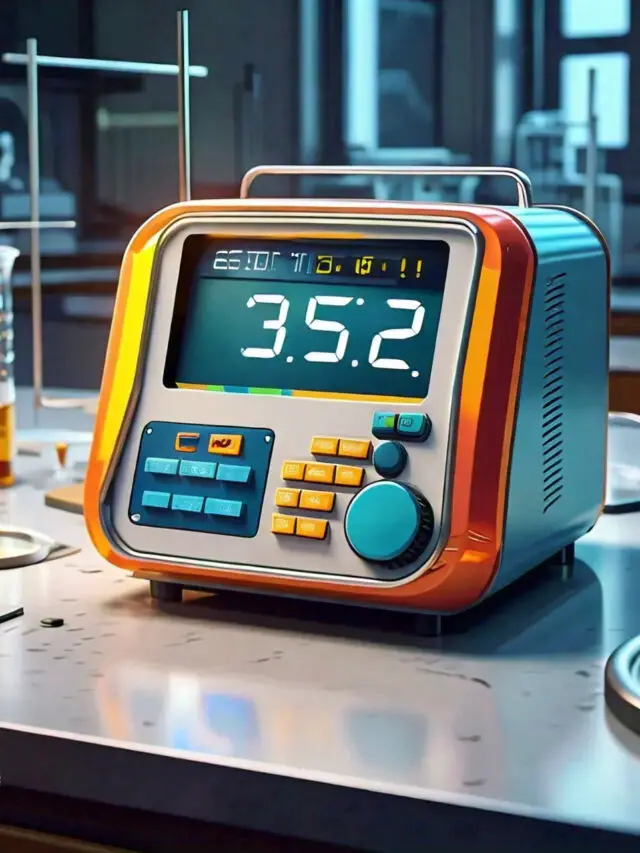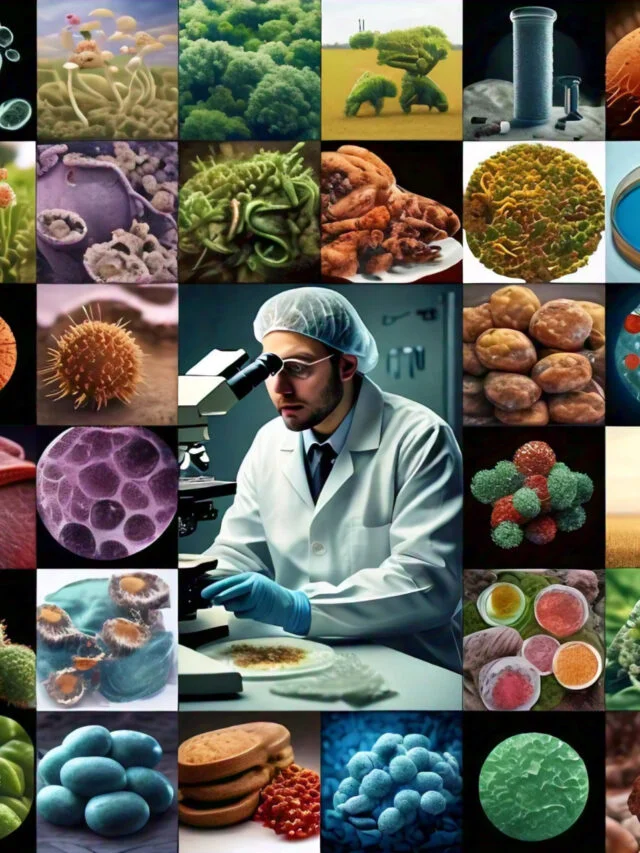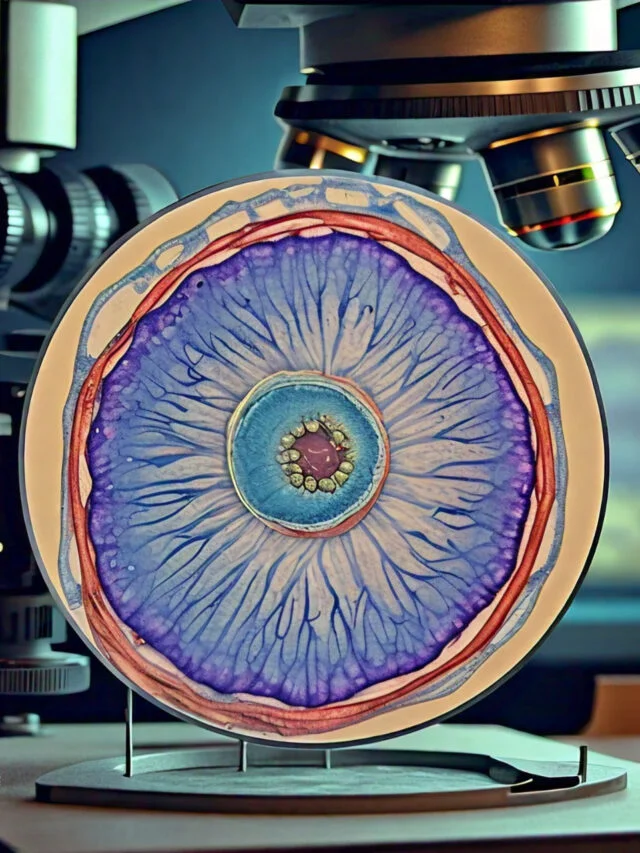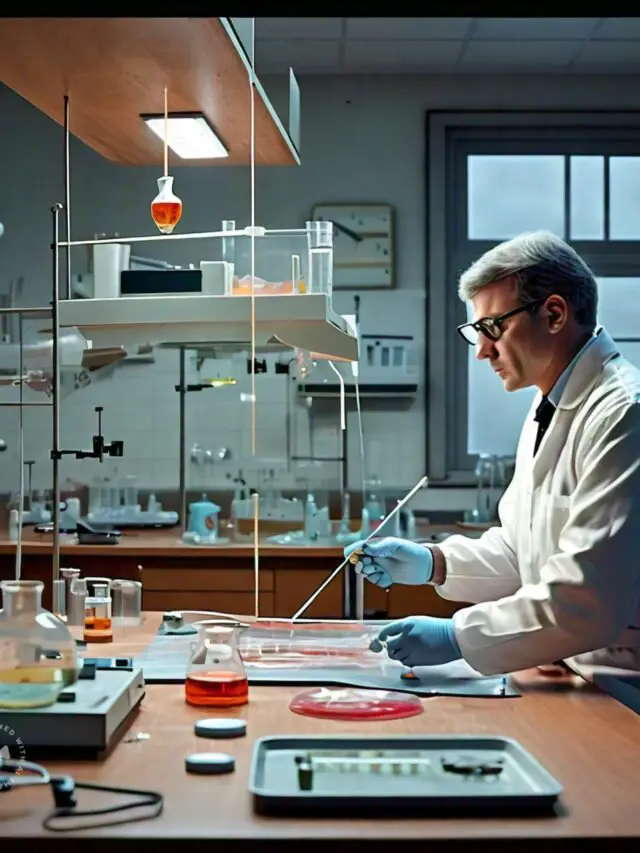The Graduate Aptitude Test in Engineering (GATE) for Biotechnology (BT) 2024 encompasses a detailed and rigorous syllabus designed to evaluate the knowledge and understanding of candidates in various domains of biotechnology. The syllabus is segmented into three primary sections: General Aptitude, Engineering Mathematics, and Core Discipline, with the Core Discipline carrying the most significant weightage. Here, we will delve into the structure and important topics of the GATE Biotechnology syllabus, aiming to provide an informative and educational overview.
Contents
GATE Biotechnology Syllabus Overview
The Graduate Aptitude Test in Engineering (GATE) for Biotechnology (BT) is a pivotal examination for candidates aspiring to further their education or career in the field of biotechnology. The syllabus for GATE Biotechnology encompasses a broad spectrum of topics, all derived from the undergraduate curriculum. Understanding the detailed syllabus is essential for strategic preparation and success in the exam. Here, we present an academic overview of the GATE Biotechnology syllabus, designed to make complex concepts accessible in a clear and informative manner.
Structure of GATE Biotechnology Syllabus
The GATE Biotechnology syllabus is organized into seven key sections:
- Engineering Mathematics
- This section covers mathematical concepts and techniques essential for engineering applications. Topics include linear algebra, calculus, differential equations, probability, and statistics.
- General Biotechnology
- Fundamental principles and applications of biotechnology.
- Topics include biochemistry, microbiology, immunology, and techniques used in biotechnology laboratories.
- Recombinant DNA Technology and Other Tools in Biotechnology
- Techniques involved in the manipulation and analysis of DNA.
- Includes gene cloning, polymerase chain reaction (PCR), and genetic engineering tools.
- Genetics and Cellular Biology
- Study of heredity and variation in living organisms.
- Covers topics like Mendelian genetics, molecular genetics, cell structure and function, and cellular communication.
- Fundamentals of Biological Engineering
- Application of engineering principles to biological systems.
- Topics include enzyme kinetics, bioreactor design, and transport phenomena in biological systems.
- Plant, Animal, and Microbial Biotechnology
- Biotechnology applications in different biological systems.
- Covers plant tissue culture, genetic modification in plants and animals, and microbial biotechnology.
- Bioprocess Engineering and Process Biotechnology
- Focuses on the processes involved in the production of biological products.
- Includes upstream and downstream processing, bioreactor operations, and bioseparation techniques.
Importance of Each Section
Each section of the GATE Biotechnology syllabus is crucial and collectively ensures a comprehensive understanding of biotechnology as a discipline. Below is a breakdown of the importance and focus areas:
- Engineering Mathematics: This foundational section is critical for solving quantitative problems and understanding engineering concepts used in biotechnology.
- General Biotechnology: Provides a broad understanding of various biological sciences that form the basis of biotechnology.
- Recombinant DNA Technology: Essential for understanding genetic manipulation techniques, which are central to modern biotechnology.
- Genetics and Cellular Biology: Core knowledge area that delves into the principles of heredity and the functioning of cells, fundamental to all biotechnological applications.
- Fundamentals of Biological Engineering: Bridges biology and engineering, helping students apply engineering principles to biological systems for problem-solving.
- Plant, Animal, and Microbial Biotechnology: Explores the applications of biotechnology across different organisms, highlighting its versatility and impact.
- Bioprocess Engineering: Focuses on the industrial applications of biotechnology, including the production and purification of biological products.
Preparation Strategy
To effectively prepare for the GATE Biotechnology exam, candidates should:
- Thoroughly understand the syllabus: Familiarize yourself with each section and its topics to plan your study schedule.
- Focus on high-weightage topics: Allocate more study time to sections that carry more weight in the exam.
- Practice regularly: Solve previous years’ question papers and take mock tests to assess your understanding and improve time management.
- Revise consistently: Regular revision is crucial to retain information and concepts.
By comprehensively understanding the GATE Biotechnology syllabus and preparing strategically, candidates can enhance their chances of success in the examination.
| Section | Topics | Description |
|---|---|---|
| Engineering Mathematics | – Linear Algebra<br>- Calculus<br>- Differential Equations<br>- Probability and Statistics | Covers mathematical concepts and techniques essential for engineering applications. |
| General Biotechnology | – Biochemistry<br>- Microbiology<br>- Immunology<br>- Biotechnology Techniques | Fundamental principles and applications of biotechnology. |
| Recombinant DNA Technology and Other Tools in Biotechnology | – Gene Cloning<br>- Polymerase Chain Reaction (PCR)<br>- Genetic Engineering Tools | Techniques involved in the manipulation and analysis of DNA. |
| Genetics and Cellular Biology | – Mendelian Genetics<br>- Molecular Genetics<br>- Cell Structure and Function<br>- Cellular Communication | Study of heredity and variation in living organisms. |
| Fundamentals of Biological Engineering | – Enzyme Kinetics<br>- Bioreactor Design<br>- Transport Phenomena in Biological Systems | Application of engineering principles to biological systems. |
| Plant, Animal, and Microbial Biotechnology | – Plant Tissue Culture<br>- Genetic Modification in Plants and Animals<br>- Microbial Biotechnology | Biotechnology applications in different biological systems. |
| Bioprocess Engineering and Process Biotechnology | – Upstream Processing<br>- Downstream Processing<br>- Bioreactor Operations<br>- Bioseparation Techniques | Focuses on the processes involved in the production of biological products. |
Exam Pattern for Biotechnology (BT) 2024
| Important Topics | Weightage (Marks) |
|---|---|
| General Aptitude | 10 |
| Engineering Mathematics | 10-15 |
| Plant and Animal Biotechnology | 15-20 |
| Bioprocess Engineering | 10-15 |
| Biotechnology | 20-25 |
| Exam Pattern for Biotechnology | GATE Exam Pattern for Biotechnology (BT) 2024 |
|---|---|
| Mode of Examination | Online |
| Duration of exam | 3 hours |
| Type of questions | MCQs, MSQs, & NATs |
| Total Sections | 3 sections i.e. General Aptitude, Mathematics, Subject-based |
| Total questions | 65 |
| Total marks | 100 marks |
| Negative marking | for MCQs only |
| Section | Distribution of Marks | Total Marks | Types of questions |
|---|---|---|---|
| General Aptitude | 5 questions of 1 mark each 5 questions of 2 marks each | 15 marks | MCQs |
| Subject Paper (BT) + Engineering Mathematics | 25 questions of 1 mark each 30 questions of 2 marks each | 85 marks | MCQs, MSQ and NATs |
| Marking Scheme for Biotechnology | GATE Marking Scheme for Biotechnology (BT) 2024 |
|---|---|
| Type of question | Negative marking for wrong answer |
| MCQ | 1/3 for 1 mark questions 2/3 for 2 marks questions |
| NAT/MSQ | No negative marking |
GATE Syllabus for Biotechnology (BT) – Section 1: Engineering Mathematics
| Topic | Subtopics |
|---|---|
| Linear Algebra | – Matrices and determinants – Systems of linear equations – Eigenvalues and eigenvectors |
| Calculus | – Limits, continuity, and differentiability – Partial derivatives, maxima, and minima – Sequences and series – Test for convergence |
| Differential Equations | – Linear and nonlinear first-order ODEs – Higher-order ODEs with constant coefficients – Cauchy’s and Euler’s equations – Laplace transforms |
| Probability and Statistics | – Mean, median, mode, and standard deviation – Random variables – Poisson, normal, and binomial distributions – Correlation and regression analysis |
| Numerical Methods | – Solution of linear and nonlinear algebraic equations – Integration by trapezoidal and Simpson’s rule – Single step method for differential equations |
GATE Syllabus for Biotechnology (BT) – Section 2: General Biology
| Topic | Subtopics |
|---|---|
| Biochemistry | – Biomolecules: structure and function – Biological membranes: structure, membrane channels and pumps, molecular motors, action potential, and transport processes – Metabolism of carbohydrates, lipids, amino acids, and nucleic acids – Photosynthesis, respiration, and electron transport chain – Enzymes: classification, catalytic and regulatory strategies – Enzyme kinetics: Michaelis-Menten equation – Enzyme inhibition: competitive, non-competitive, and uncompetitive inhibition |
| Microbiology | – Bacterial classification and diversity – Microbial Ecology: microbes in marine, freshwater, and terrestrial ecosystems – Microbial interactions – Viruses: structure and classification – Methods in microbiology – Microbial growth and nutrition – Nitrogen fixation – Microbial diseases and host-pathogen interactions – Antibiotics and antimicrobial resistance |
| Immunology | – Innate and adaptive immunity – Humoral and cell-mediated immunity – Antibody structure and function – Molecular basis of antibody diversity – T cell and B cell development – Antigen-antibody reaction – Complement – Primary and secondary lymphoid organs – Major histocompatibility complex (MHC) – Antigen processing and presentation – Polyclonal and monoclonal antibody – Regulation of immune response – Immune tolerance – Hypersensitivity – Autoimmunity – Graft versus host reaction – Immunization and vaccines |
GATE Syllabus for Biotechnology (BT) – Section 3: Genetics, Cellular and Molecular Biology
| Topic | Subtopics |
|---|---|
| Genetics and Evolutionary Biology | – Mendelian inheritance – Gene interaction – Complementation – Linkage, recombination, and chromosome mapping – Extrachromosomal inheritance – Microbial genetics: transformation, transduction, and conjugation – Horizontal gene transfer and transposable elements – Chromosomal variation – Genetic disorders – Population genetics – Epigenetics – Selection and inheritance – Adaptive and neutral evolution – Genetic drift – Species and speciation |
| Cell Biology | – Prokaryotic and eukaryotic cell structure – Cell cycle and cell growth control – Cell-cell communication – Cell signaling and signal transduction – Post-translational modifications – Protein trafficking – Cell death and autophagy – Extracellular matrix |
| Molecular Biology | – Molecular structure of genes and chromosomes – Mutations and mutagenesis – Regulation of gene expression – Nucleic acid: replication, transcription, splicing, translation, and their regulatory mechanisms – Non-coding and micro RNA – RNA interference – DNA damage and repair |
GATE Syllabus for Biotechnology (BT) – Section 4: Fundamentals of Biological Engineering
| Topic | Subtopics |
|---|---|
| Engineering Principles Applied to Biological Systems | – Material and energy balances for reactive and non-reactive systems – Recycle, bypass, and purge processes – Stoichiometry of growth and product formation – Degree of reduction, electron balance, and theoretical oxygen demand |
| Classical Thermodynamics and Bioenergetics | – Laws of thermodynamics – Solution thermodynamics – Phase equilibria, reaction equilibria – Ligand binding – Membrane potential – Energetics of metabolic pathways, oxidation, and reduction reactions |
| Transport Processes | – Newtonian and non-Newtonian fluids, fluid flow: laminar and turbulent – Mixing in bioreactors, mixing time – Molecular diffusion and film theory – Oxygen transfer and uptake in bioreactor, kLa and its measurement – Conductive and convective heat transfer, LMTD, overall heat transfer coefficient – Heat exchangers |
GATE Syllabus for Biotechnology (BT) – Section 5: Bioprocess Engineering and Process Biotechnology
| Section | Topics |
|---|---|
| Bioreaction engineering | Rate law, zero and first order kinetics; Ideal reactors – batch, mixed flow and plug flow; Enzyme immobilization, diffusion effects – Thiele modulus, effectiveness factor, Damkoehler number; Kinetics of cell growth, substrate utilization and product formation; Structured and unstructured models; Batch, fed-batch and continuous processes; Microbial and enzyme reactors; Optimization and scale up. |
| Upstream and Downstream Processing | Media formulation and optimization; Sterilization of air and media; Filtration – membrane filtration, ultrafiltration; Centrifugation – high speed and ultra; Cell disruption; Principles of chromatography – ion exchange, gel filtration, hydrophobic interaction, affinity, GC, HPLC and FPLC; Extraction, adsorption and drying. |
| Instrumentation and Process Control | Pressure, temperature and flow measurement devices; Valves; First order and second order systems; Feedback and feed forward control; Types of controllers – proportional, derivative and integral control, tuning of controllers. |
GATE Syllabus for Biotechnology (BT) – Section 6: Plant, Animal and Microbial Biotechnology
| Section | Topics |
|---|---|
| Plant Biotechnology | Totipotency; Regeneration of plants; Plant growth regulators and elicitors; Tissue culture and cell suspension culture system – methodology, kinetics of growth and nutrient optimization; Production of secondary metabolites; Hairy root culture; Plant products of industrial importance; Artificial seeds; Somaclonal variation; Protoplast, protoplast fusion – somatic hybrid and cybrid; Transgenic plants – direct and indirect methods of gene transfer techniques; Selection marker and reporter gene; Plastid transformation. |
| Animal Biotechnology | Culture media composition and growth conditions; Animal cell and tissue preservation; Anchorage and non-anchorage dependent cell culture; Kinetics of cell growth; Micro & macrocarrier culture; Hybridoma technology; Stem cell technology; Animal cloning; Transgenic animals; Knock-out and knock-in animals. |
| Microbial Biotechnology | Production of biomass and primary/secondary metabolites – Biofuels, bioplastics, industrial enzymes, antibiotics; Large scale production and purification of recombinant proteins and metabolites; Clinical-, food- and industrial- microbiology; Screening strategies for new products. |
GATE Syllabus for Biotechnology (BT) – Section 7: Recombinant DNA technology and Other Tools in Biotechnology
| Section | Topics |
| Recombinant DNA technology | Restriction and modification enzymes; Vectors – plasmids, bacteriophage and other viral vectors, cosmids, Ti plasmid, bacterial and yeast artificial chromosomes; Expression vectors; cDNA and genomic DNA library; Gene isolation and cloning, strategies for production of recombinant proteins; Transposons and gene targeting; |
| Molecular tools | Polymerase chain reaction; DNA/RNA labelling and sequencing; Southern and northern blotting; In-situ hybridization; DNA fingerprinting, RAPD, RFLP; Site-directed mutagenesis; Gene transfer technologies; CRISPR-Cas; Biosensing and biosensors. |
| Analytical tools | Principles of microscopy – light, electron, fluorescent and confocal; Principles of spectroscopy – UV, visible, CD, IR, fluorescence, FT-IR, MS, NMR; Electrophoresis; Microarrays; Enzymatic assays; Immunoassays – ELISA, RIA, immunohistochemistry; immunoblotting; Flow cytometry; Whole genome and ChIP sequencing. |
| Computational tools | Bioinformatics resources and search tools; Sequence and structure databases; Sequence analysis – sequence file formats, scoring matrices, alignment, phylogeny; Genomics, proteomics, metabolomics; Gene prediction; Functional annotation; Secondary structure and 3D structure prediction; Knowledge discovery in biochemical databases; Metagenomics; Metabolic engineering and systems biology. |










